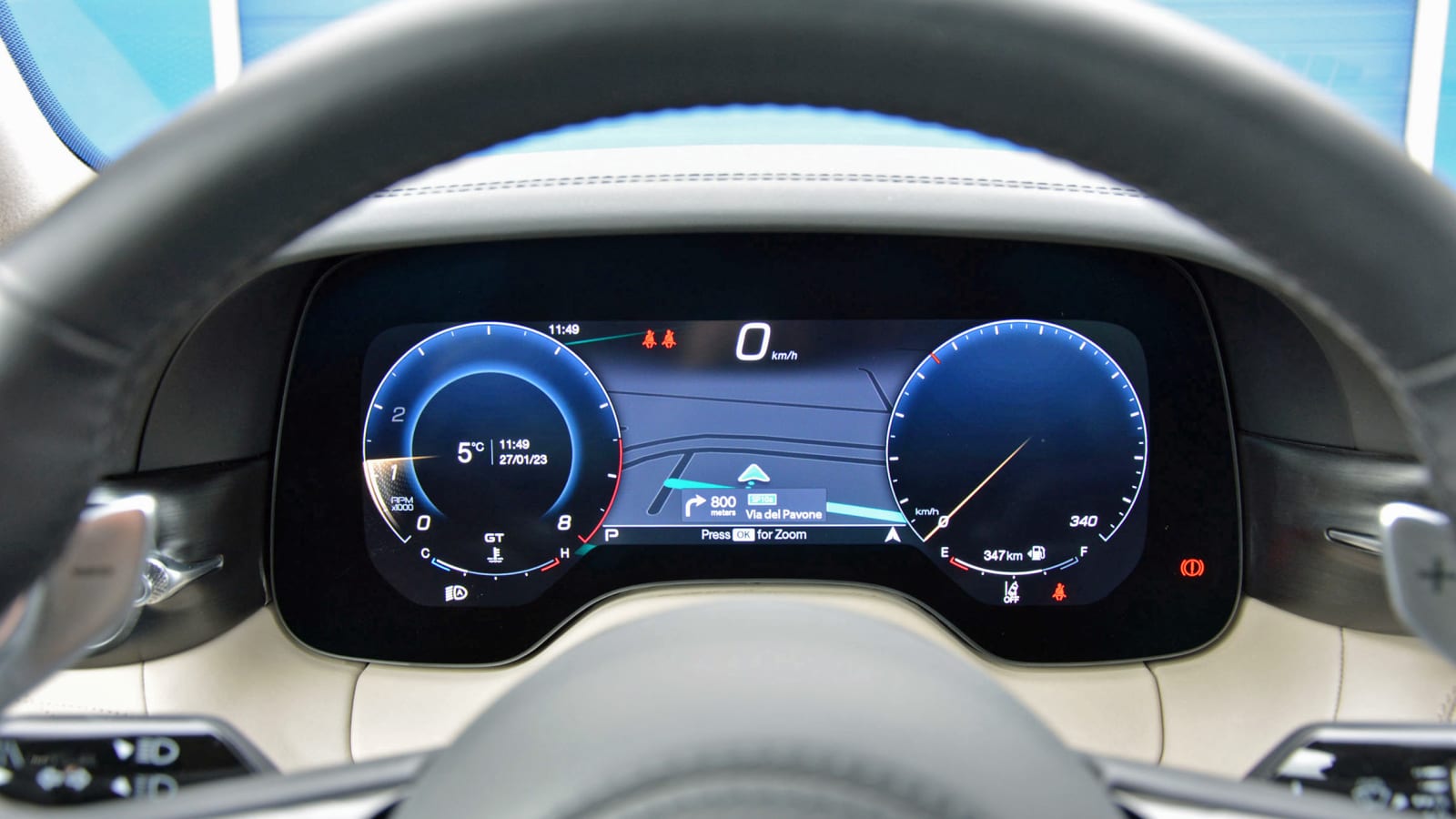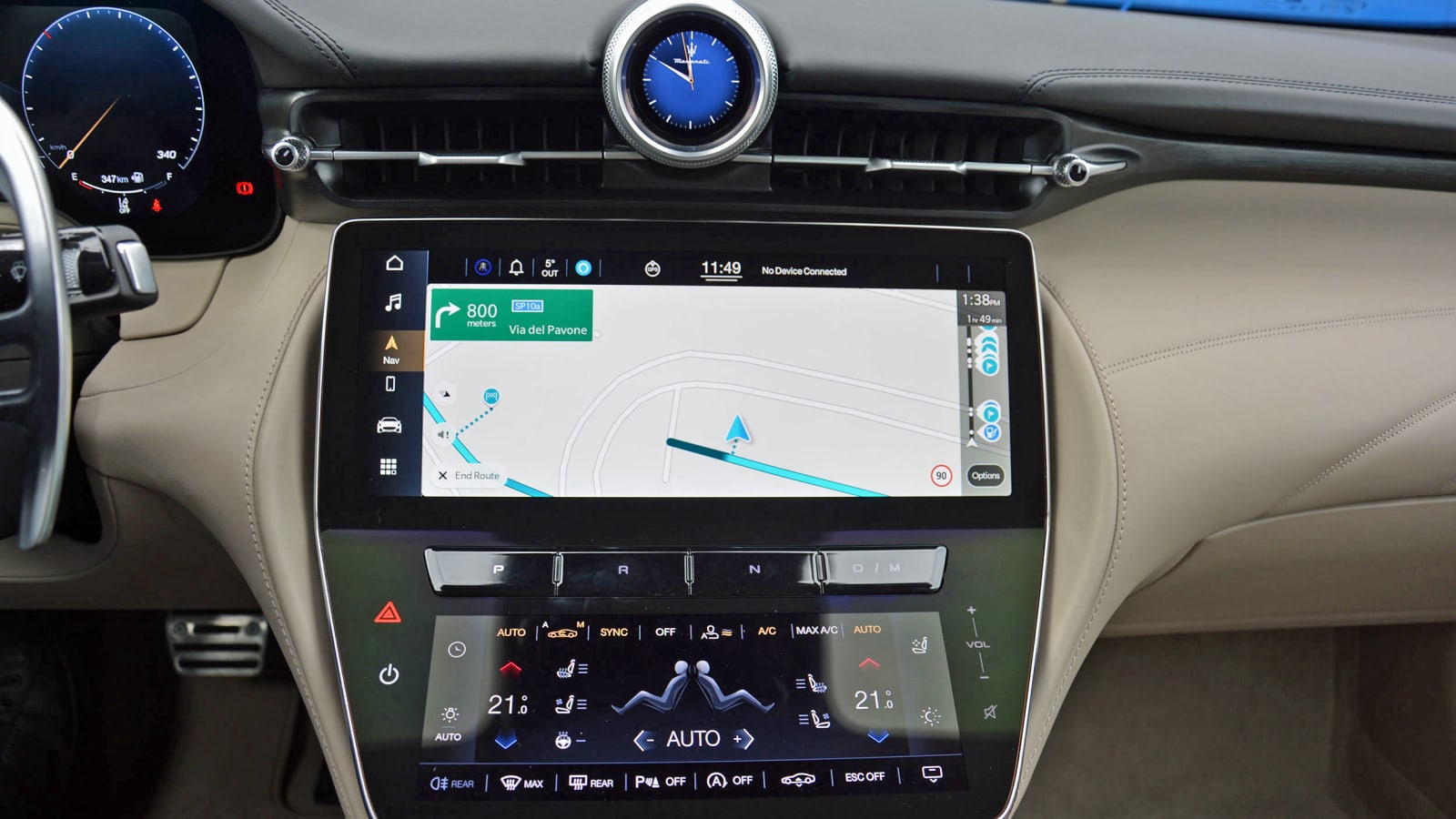2024 Maserati GranTurismo First Drive Review: Striking balance
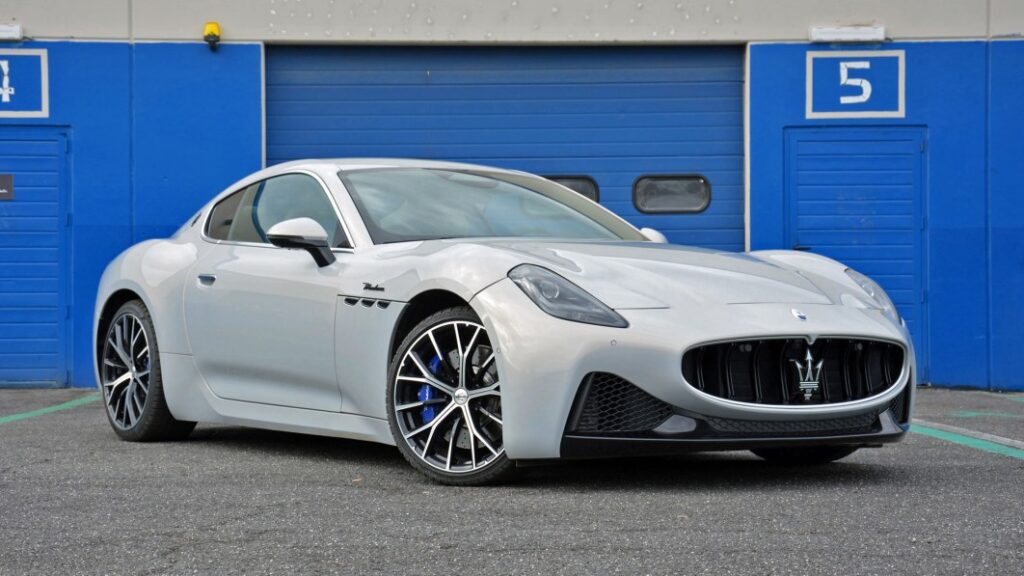
ROME — It’s easy to argue that the coupe is dead — especially big coupes with four seats. Never a huge segment to begin with, this slice of the market has shrunk in recent years as buyers flock to SUVs and carmakers allocate their development budget accordingly. In 2023, it makes more sense from a business point of view to slap the “coupe” label on a four-door crossover than to put it on a real coupe with two doors.
Maserati isn’t giving up. It’s not just business; it’s also personal. There’s a big chunk of its heritage built on four-seater coupes, so it completely reinvented the GranTurismo instead of throwing the nameplate into the darkest locker of automotive history. It’s still a coupe, and it still has four seats, but significant changes to the powertrain (including a smaller engine and all-wheel drive) aim to broaden its appeal.
Maserati planted its flag on this turf in 1947 when it released its first road car, the Pininfarina-designed A6 1500 Gran Turismo, and it has never strayed far from it since. Its designers channeled this heritage into the second-generation GranTurismo without veering into retro territory or using a Xerox machine.
“People often ask me, ‘Are you inspired by the past?’ We’re not copying elements, we’re not copying styles necessarily, but we do allow ourselves to be inspired by the way we were constructing our cars back then,” Klaus Busse, the head of Maserati’s design department, told me. He cited the proportions as an example: sitting low to the ground, the GranTurismo features a long hood and a short trunk lid, which are shapes that have characterized dozens of cars positioned in the gran turismo segment for decades.
Beyond the basic shape, the GranTurismo shares little with its predecessor — it illustrates what Busse meant in 2020 when he told me that the then-new MC20 would influence the rest of the range. It’s recognizable as a Maserati thanks in part to vertical headlights mounted above an oval grille, and of course it features the three fender-mounted vents that have become the Italian carmaker’s signature. The coupe features a pure, fluid design with one exception: the fin-like protrusion on the roof. It houses a camera, and it’s only fitted to GranTurismo models ordered with the digital rear-view mirror. I learned that integrating it into the trunk lid, like a rear-view camera, wouldn’t have provided sufficient visibility.
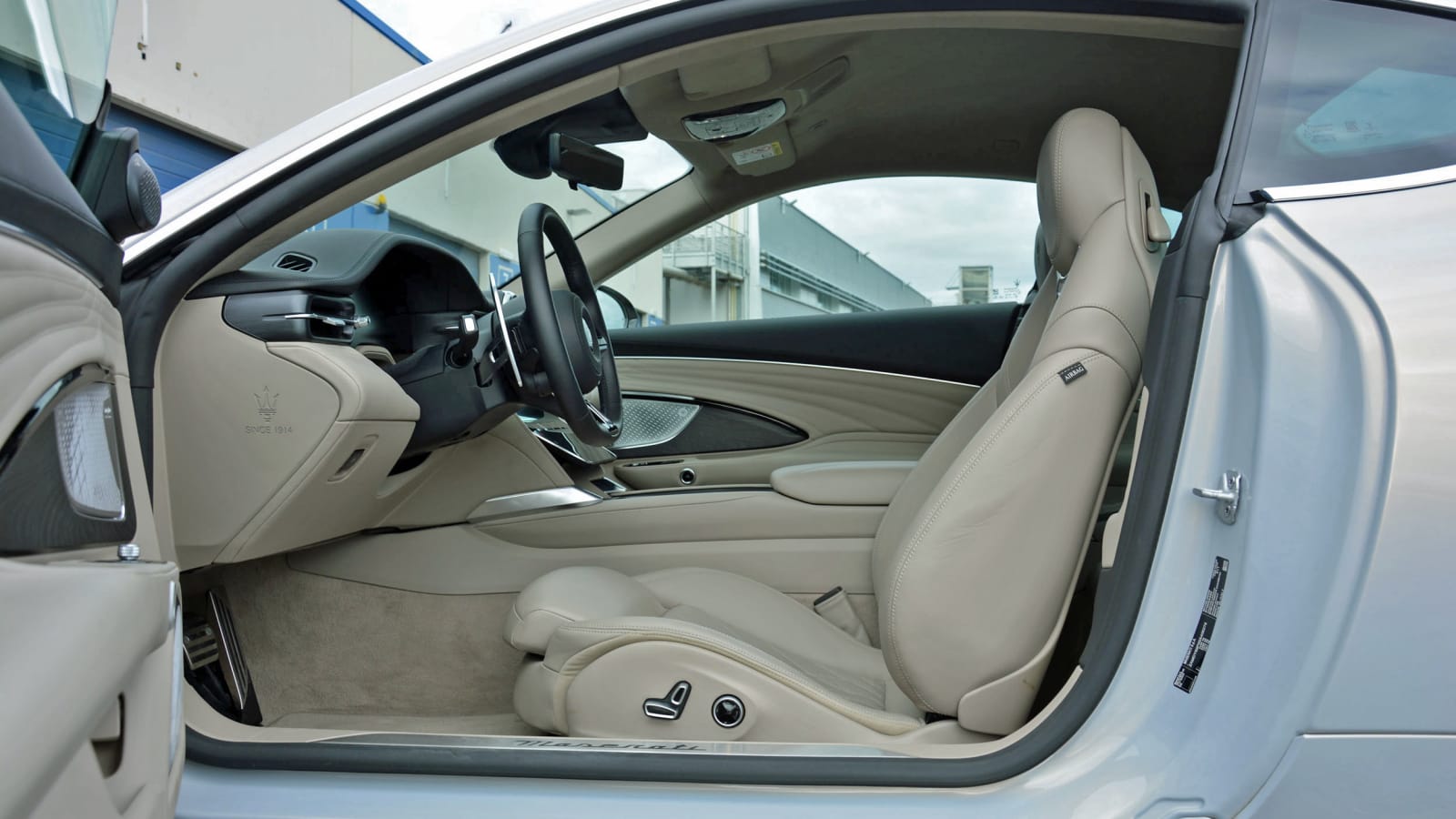
The interior perfectly embodies the GranTurismo’s spirit: It strikes a middle ground between the MC20, which is a hardcore supercar, and the Quattroporte, which is a comfort-oriented sport sedan. The front seats are nicely bolstered but soft enough to sit on for hours at a time, and the rear seats … well, first of all they’re there, which is somewhat surprising considering that the list of four-seater coupes joining AMC, DeLorean, and Innocenti in the pantheon of automotive history grows annually. They’re not there just for show, either. While I wouldn’t want to ride in one of the rear seats on a trip from New York City to Los Angeles, they’re big enough to carry average-sized adults on shorter trips (especially if the front passengers are average-sized as well). The trunk is about 20% bigger than the original GranTurismo’s, and Maserati integrated a pass-through into the rear seatback to prepare the coupe for a ski trip.
Maserati isn’t a firm that has historically been known for peddling cutting-edge technology. Even its top executives openly admit that, not with a sense of pride or a tinge of shame but in a realistic, matter-of-fact way that’s becoming rare in the automotive industry. Buyers want technology, however, and no carmaker can resist this shift, so the GranTurismo is equipped with more digital features than you might expect. The driver notably faces a digital instrument cluster that straddles the steering column cover.
It’s a relatively unusual layout, but there’s a good reason behind it.
“We gave the 12-inch instrument cluster this unique shape instead of using a square box like everyone else because we can mount it lower. If you have a flat box, you cannot move the cluster down enough to avoid cutting off the upper corners,” Busse noted. “We think we’ve achieved the perfect viewing angle.”
The center console is dominated by a panel that houses two screens — this is the same basic layout found in the Grecale. The upper unit displays the infotainment system, while the lower unit shows the climate control system’s settings, among other menus. Both screens are fairly straight-forward to use, they offer sharp-looking graphics, and they respond to input almost instantly. Another cool touch is the clock that sits on the dashboard: it’s digital and the driver can configure it to display a clock, a compass and a graph that shows accelerator and brake pedal inputs, among several other menus.
What we have, then, is a big, luxurious coupe with a front-mounted engine and four seats — that’s exactly what the old GranTurismo was as well, but the two models couldn’t be more different under the sheet metal. First, the engine in question is a version of the twin-turbocharged, 3.0-liter V6 inaugurated by the MC20 and also found under the hood of the Grecale Trofeo. Called Nettuno in Maserati-speak, it makes 490 horsepower and 443 pound-feet of torque in the base GranTurismo Modena (pictured in our gallery). Step up to the GranTurismo Trofeo and those figures increase to 550 and 479, respectively. It’s bolted to an eight-speed automatic transmission that spins the four wheels, and this is a noteworthy difference because the first-generation GranTurismo was exclusively offered with rear-wheel drive.
Downsizing from eight to six cylinders can sound like ordering a Bud Light instead of a strong, small-batch pastry stout, and in some cases it’s just as disappointing, but in this application it works. Maserati stuffed the V6 close to the firewall — it’s almost entirely behind the front axle — and this improves handling by evening out the weight distribution, which now checks in at about 52% front and 48% rear. There’s less mass to distribute, too: the extensive use of aluminum helps reduce the GranTurismo’s weight to around 3,957 pounds, which is about 130 pounds lighter than the outgoing model. The differences don’t end there: the new GranTurismo comes standard with an air suspension system and Brembo brakes.
Behind the Trofeo’s wheel, looking over the long hood flanked by bulged wheel arches, these changes add up to a sublime driving experience. The last GranTurismo was a looker but not really a driver; the new one is both, and it feels like it’s several cars in one. In normal driving conditions it’s as tame as you need it to be: not every drive is exciting, and the GranTurismo is happy to move along at a relaxed pace.
It’s a nice place to spend time in. The interior is well-built, though the big, block-like buttons used to select a gear are clunky to use. There’s no volume knob, but buttons hidden on the part of the steering wheel that faces the dashboard let you turn the music up or down without reaching over to the touch-sensitive slider on the right side of the bottom touchscreen, and Busse’s claim that the instrument cluster is right in the driver’s line of sight rings true. We often associate Italian cars with unergonomic, quirky design, and this reputation hasn’t always been unwarranted (have you ever tried to roll down the front windows in an Alfa Romeo Milano? Text me when you’ve found the switches), but there’s none of it here. Beyond the shift buttons, the one change I’d make is to tilt the touchscreen towards the driver.
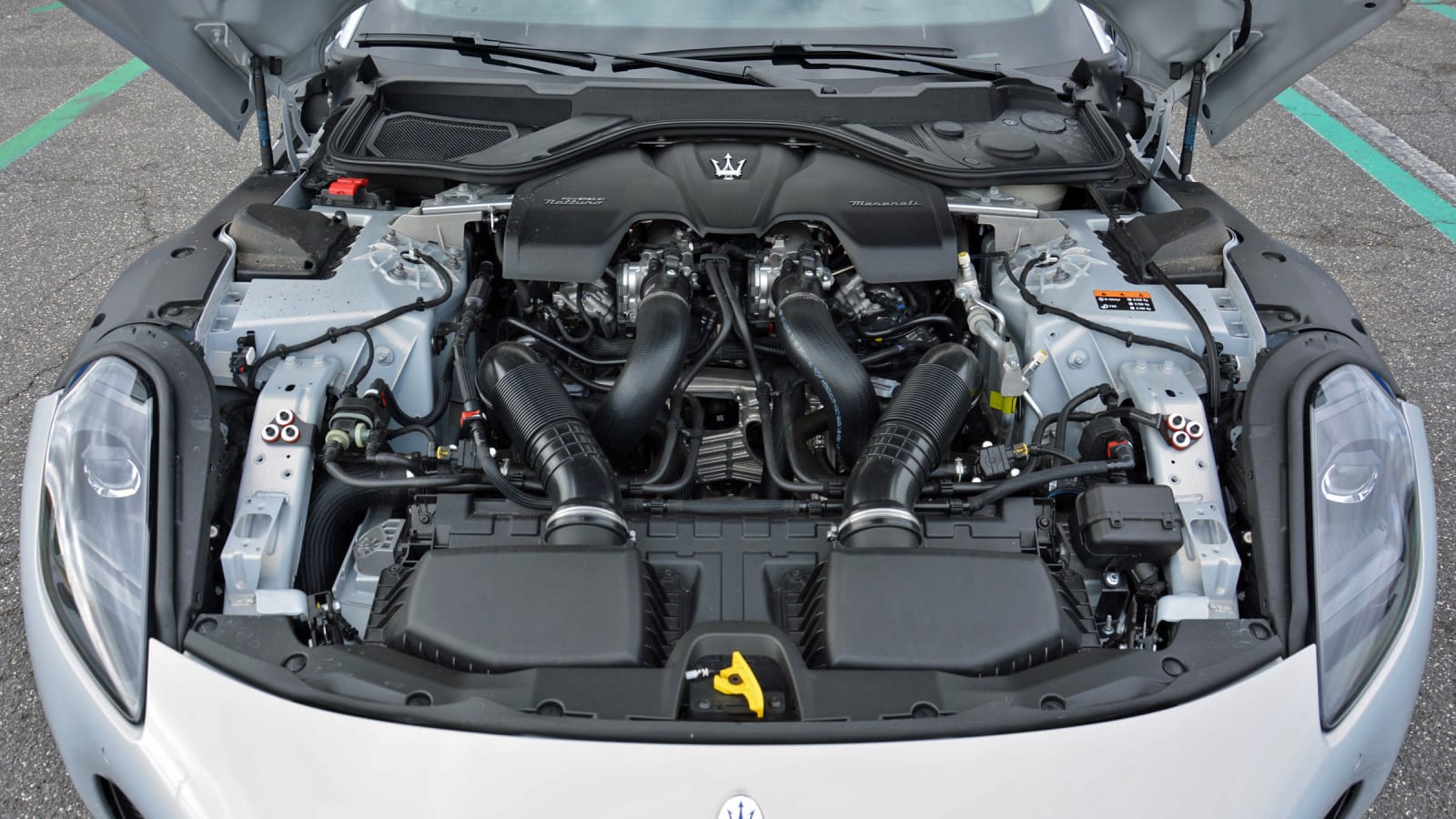
The newfound balance and the all-wheel-drive system’s grip come to light on an empty, twisty road: the GranTurismo feels like a supercar with four seats rather than like a four-seater with supercar power. The 3.0-liter V6 overcomes a negligible amount of lag and blasts the coupe forward. The throttle response is sharp, and the six-cylinder sings a beautiful song — it’s not as sonorous as the old, naturally-aspirated V8, but it has the character and the soundtrack you expect from an exotic Italian engine. It also develops more power, the now-retired Ferrari-built V8 was rated at 454 horsepower in its ultimate evolution, and it’s complemented by a quick, direct steering system that doesn’t feel overly or annoyingly artificial.
Switching to an adjustable air suspension system makes a perceptible difference as well. Its firmness is linked to the driving modes, though the system can also be adjusted independently using a button on the steering wheel, and while it adds complexity compared to a simpler, fixed setup with steel parts, it also widens the spread between comfort and performance. The ride is never harsh — it’s markedly softer than, say, the MC20’s — but in its firmest setting the suspension does a good job of keeping body roll at bay. Dial it down and it becomes more compliant and plusher, though it’s never soft. The brakes have one mode: strong as hell, which is expected when you’ve got rotors the size of a large pizza up front.
Put simply: this car is awesome. It’s the kind of exotic that reminds you driving can be exciting.
An interesting counterpoint to the GranTurismo’s athleticism is that it’s not small. It’s pretty nimble to drive, especially for what it is, but it stretches 195.2 inches long, 77 inches wide excluding the door mirrors, and 53.3 inches tall. For context, it’s a few sixteenths of an inch narrower than the Levante SUV.
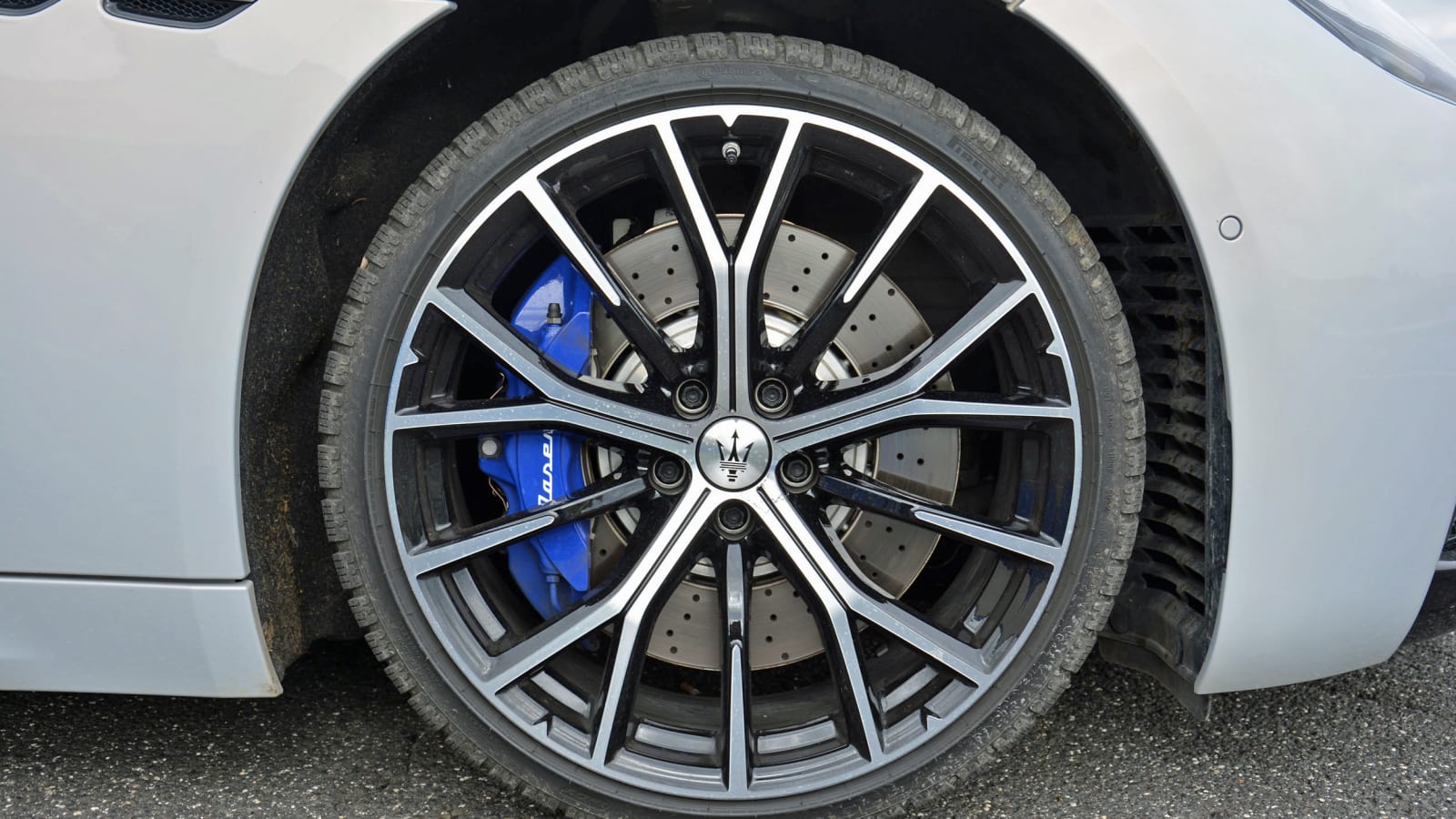

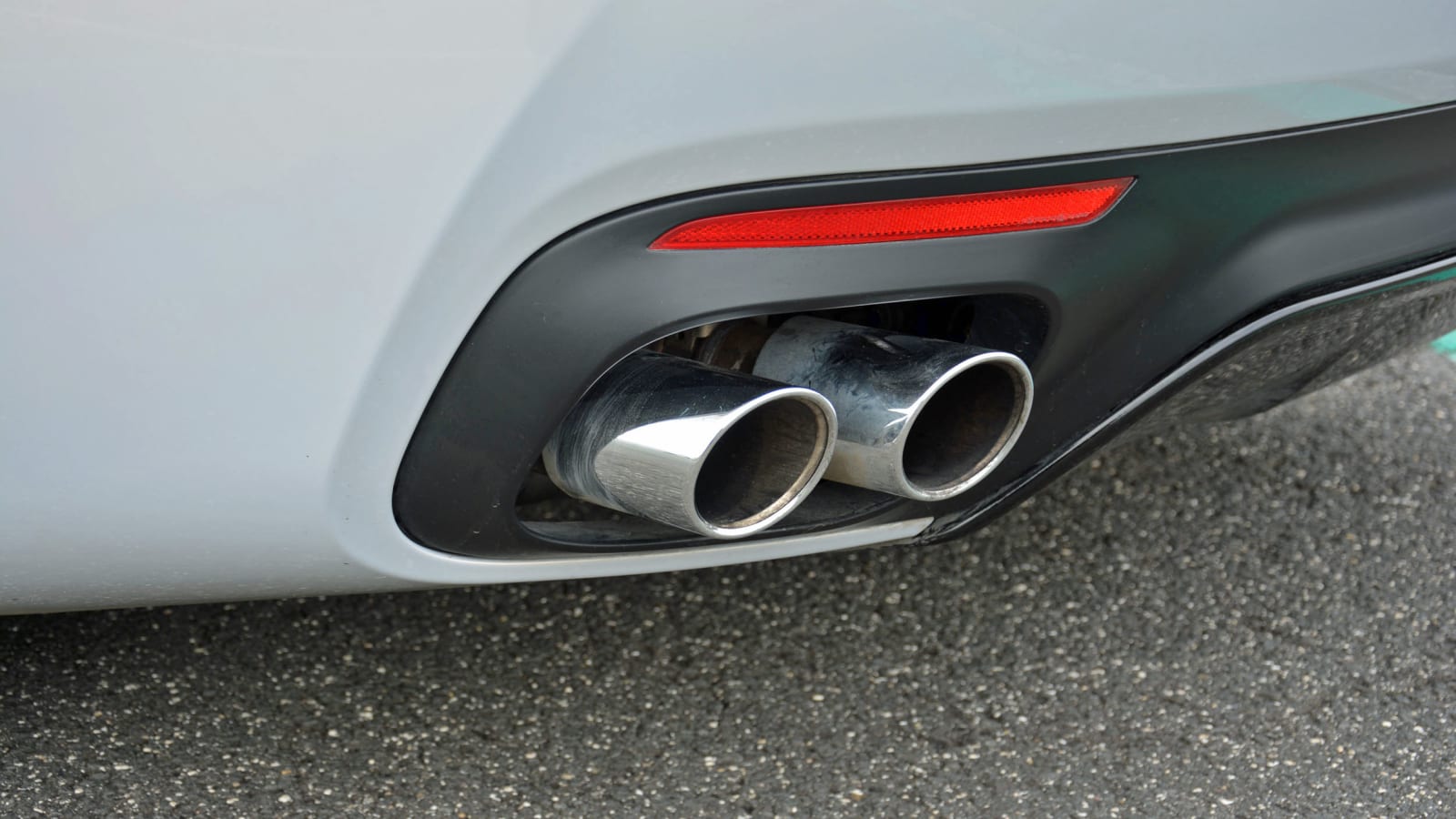
On a secondary level, the second-generation GranTurismo pelts Maserati into the electric car segment for the first time. The company’s first series-produced EV wears the Folgore nameplate, which translates to “thunderbolt” in Italian, and it’s built on the same basic platform as the V6-powered GranTurismo — Maserati makes both variants on the same assembly line. Minor design tweaks, including a powertrain-specific front bumper, set the battery-powered GranTurismo apart from its gasoline-burning sibling.
Power for the Folgore comes from three electric motors: one zaps the front wheels into motion and the other two are each assigned to one of the rear wheels. They draw electricity from a 92.5-kilowatt-hour lithium-ion battery pack compatible with 270-kilowatt fast-charging, and their combined output checks in at roughly 1,207 horsepower, though they don’t peak in sync so the maximum output that reaches the wheels at any given time is around 751 horsepower and 996 pound-feet of torque. These impressive figures unlock a 2.7-second sprint from 0-62 mph and a top speed of 198 mph. As a tradeoff, the electric powertrain inevitably adds weight: the Folgore tips the scale at nearly 5,000 pounds.
Maserati developed a clever packaging solution to avoid giving the Folgore SUV-like ground clearance to make space for the battery. The pack is T-shaped, and part of it is located in the transmission tunnel while the rest encroaches on the trunk. The electronics live where you’d normally find the 3.0-liter V6.
“We’re going to let buyers decide [whether they prefer the V6 or the EV]; we can scale production up or down depending on demand. We don’t want to influence our customers’ choice,” explained William Peffer, the head of Maserati’s North American division, during the GranTurismo’s unveiling in 2022.
My time behind the wheel of the Folgore was limited to a few laps of the Vallelunga race track located on the far outskirts of Rome. Like just about every electric car, it’s quick off the line: there is no turbo lag, there are no gears to go through, and the drivetrain delivers peak torque to the wheels almost instantly. The coupe feels lighter than it is and you almost forget you’re lugging around the extra mass of the battery until you need to slow down for a tight right-hander from triple-digit speeds — you end up having to brake considerably harder than you expect. The torque vectoring system adjusts the level of power delivered to each rear wheel for quick, precise cornering, and the Folgore takes off again as soon as you floor the accelerator. It’s perfectly smooth and quiet (except for the artificial powertrain noise).
That’s great if you’re commuting on an overly crowded freeway in California, or if you’re driving across a traffic-dense European city, but are smoothness and quietness really the main qualities you look for in a car like the GranTurismo? I have a blender that mashes peanut butter and bananas at 15,000 rpm but that doesn’t make it exciting. The electric GranTurismo isn’t a bad car or a bad EV, but it lacks soul, that unquantifiable quality that makes a good enthusiast’s car. Try it out — your mileage may vary.
By balancing heritage that shouldn’t be swept under the rug and buyer expectations that shouldn’t be ignored, Maserati has turned the GranTurismo into a seriously desirable coupe. This is the kind of car that I’d like to see more of the company’s peers and rivals make. It’s relatively practical, it’s luxurious, and it’s a massive amount of fun to drive — there aren’t many new coupes parked at this intersection.
Maserati dealers across the nation will begin receiving the V6-powered 2024 GranTurismo in April 2023. Buyers who want the EV will need to be patient: it’s not scheduled to arrive until the second half of the year. Pricing for the GranTurismo Modena starts at $174,000 while the Trofeo costs $205,000. Maserati hasn’t set the Folgore’s price yet but clarified the EV will cost more than the Trofeo.
